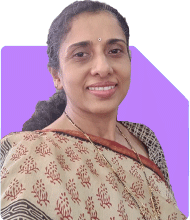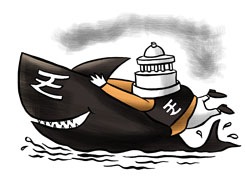Hi, I am 40 yrs old earning 2.75 Laks per month. Wife not working and 2 sons stdying LKG and 2 std in school. I have 80 laks in Equities , 1 cr in FDs and Bonds and 50 laks in EPF,PPF and other insurance products. And have 3 house porperties worth 2 crs and getting 55k rent per month. No loans. Apart from SIPs and other savings 1 spent around 1.5 Laks per month which includs rent, School fee and life and health insurence . I want to retire in next 3years . Currently saving 50k on SIP and 50k on 6%-7% guaranteed return insurance plan. Shall I need to change my investment plan? How much montly amount I need after 3 years. Please advise. Thanks.
Ans: First, let's assess your current financial status. You are doing exceptionally well with your investments and savings. Earning Rs 2.75 lakhs per month is commendable. Your diversified portfolio includes equities, fixed deposits (FDs), bonds, EPF, PPF, and insurance products. Additionally, your real estate investments are generating Rs 55,000 in rent per month.
You have significant assets:
Rs 80 lakhs in equities
Rs 1 crore in FDs and bonds
Rs 50 lakhs in EPF, PPF, and insurance products
Three properties worth Rs 2 crores
Your monthly expenses are Rs 1.5 lakhs, including rent, school fees, and insurance. You save Rs 1 lakh monthly through SIPs and guaranteed return plans.
Your goal is to retire in three years. To achieve this, we need a robust plan.
Retirement Planning and Income Needs
When planning for retirement, consider your future monthly expenses. You currently spend Rs 1.5 lakhs per month. With inflation, your expenses will rise. Assuming an inflation rate of 6%, your expenses after three years will be around Rs 1.79 lakhs per month.
You'll need to generate a steady income post-retirement. With no active income, your investments should cover your living expenses.
Investment Strategy Evaluation
Your investment portfolio is diversified, but there are areas for improvement. Let's evaluate each component.
Equities
Equities have the potential for high returns but come with risks. It's crucial to balance your equity exposure as you approach retirement. Consider shifting a portion of your equity investments to more stable options to reduce risk.
Fixed Deposits and Bonds
Your Rs 1 crore in FDs and bonds provides stability but yields lower returns. With inflation, these returns may not be sufficient. Consider diversifying into higher-yield debt instruments or mutual funds that offer better returns while maintaining stability.
EPF, PPF, and Insurance Products
Your Rs 50 lakhs in EPF, PPF, and insurance products are secure investments. EPF and PPF provide good returns with tax benefits. However, ensure your insurance products are not investment-heavy. If you have investment-cum-insurance plans, consider surrendering them and reinvesting in mutual funds.
Real Estate
Your properties provide rental income, which is a stable source. Ensure you maintain these properties well to continue receiving rental income. Diversify your rental income sources if possible.
SIPs and Guaranteed Return Plans
You save Rs 50,000 monthly in SIPs and Rs 50,000 in guaranteed return plans. SIPs are an excellent way to invest in mutual funds, providing diversification and potential for growth. Guaranteed return plans offer stability but lower returns. Consider reallocating some funds from guaranteed return plans to higher-yield mutual funds.
Future Investment Recommendations
To achieve your retirement goals, make the following changes:
Increase SIP Contributions
Increase your SIP contributions to maximize returns. Mutual funds offer higher returns over time compared to guaranteed return plans. Focus on diversified equity mutual funds managed by experienced fund managers.
Rebalance Your Portfolio
As you approach retirement, reduce equity exposure and increase debt instruments. Allocate funds to debt mutual funds, which offer better returns than FDs and bonds. This ensures stability while providing reasonable returns.
Review Insurance Products
Review your insurance products. If you have investment-cum-insurance plans, consider surrendering them. Reinvest the proceeds in mutual funds. Ensure you have adequate life and health insurance coverage for your family's needs.
Consider Systematic Withdrawal Plans (SWPs)
Post-retirement, use SWPs from mutual funds to generate regular income. SWPs provide a steady cash flow while keeping your principal invested for growth. This is tax-efficient compared to traditional fixed income sources.
Emergency Fund
Maintain an emergency fund to cover unexpected expenses. This fund should cover at least 6-12 months of living expenses. Keep it in liquid assets like savings accounts or liquid mutual funds.
Regular Reviews
Regularly review your financial plan. Adjust your investments based on market conditions and changes in your life. Consulting with a certified financial planner ensures your plan remains on track.
Tax Planning
Efficient tax planning is crucial. Invest in tax-saving instruments like ELSS mutual funds. Optimize your investments to minimize tax liability and maximize returns.
Post-Retirement Income Sources
Let's discuss potential income sources post-retirement:
Rental Income
Your rental income of Rs 55,000 per month is a stable source. Ensure your properties are well-maintained to continue receiving rent. Diversify rental income if possible.
Systematic Withdrawal Plans (SWPs)
SWPs from mutual funds provide regular income. Invest a portion of your portfolio in mutual funds and set up SWPs to receive monthly income.
Dividends and Interest Income
Invest in dividend-paying stocks and mutual funds. Interest from debt instruments and fixed deposits can also provide regular income. Diversify to balance growth and stability.
Government Schemes
Explore government schemes for retirees. Schemes like the Senior Citizens Savings Scheme (SCSS) offer higher interest rates and security.
Conclusion
You have a solid financial foundation. With careful planning and adjustments, you can achieve your retirement goals.
Focus on rebalancing your portfolio, increasing SIP contributions, and reviewing insurance products. Ensure a steady post-retirement income through diversified sources.
Your financial journey is commendable. With the right strategy, your retirement will be financially secure and fulfilling.
Best Regards,
K. Ramalingam, MBA, CFP,
Chief Financial Planner,
www.holisticinvestment.in



























